Across the twilight skies of every continent except Antarctica, mysterious birds swoop silently, their cryptic plumage and nocturnal habits concealing them from human observation. Nightjars, belonging to the family Caprimulgidae, are among the most elusive avian species on our planet. Despite their widespread distribution, these remarkable birds remain largely unknown to the general public, their secretive behaviors shrouded in mystery. From their unusual physical adaptations to their mesmerizing courtship displays, nightjars possess fascinating characteristics that have evolved over millennia. This article delves into the hidden world of these crepuscular and nocturnal hunters, revealing surprising facts about their extraordinary lives that showcase why they deserve both our attention and conservation efforts.
Masters of Camouflage: Nature’s Disappearing Act
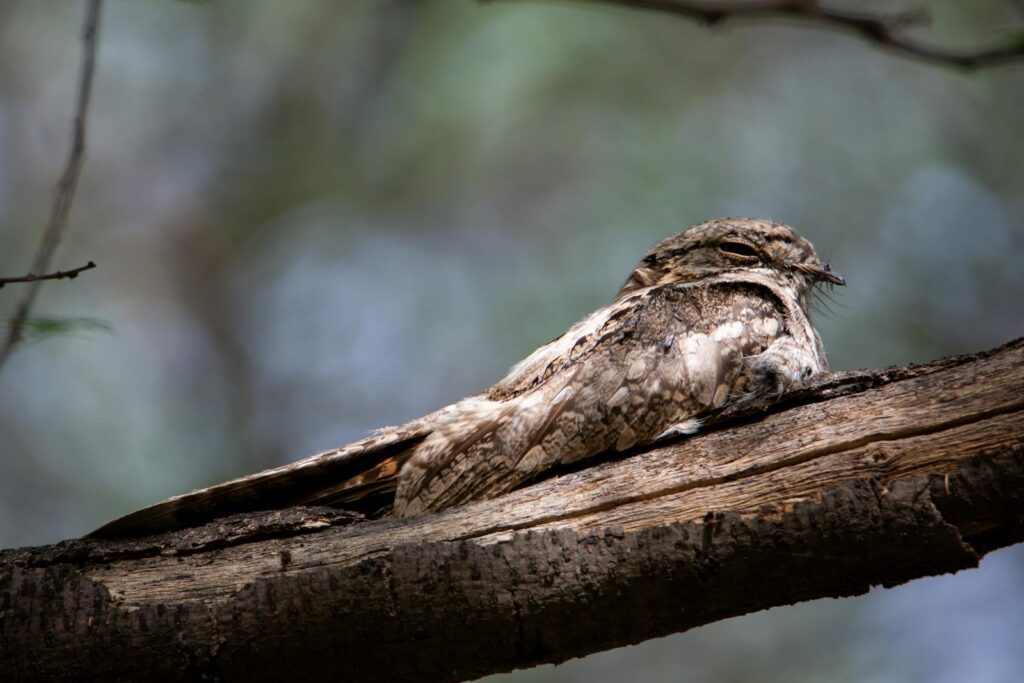
Nightjars possess some of the most effective camouflage in the avian world, with plumage patterns that perfectly mimic tree bark, fallen leaves, and forest floor detritus. This exceptional camouflage allows them to virtually disappear when resting on the ground or perched lengthwise along tree branches during daylight hours. Their cryptic coloration—typically mottled browns, grays, and blacks—creates disruptive patterns that break up their outline and make them nearly impossible to spot even from just a few feet away. Some species, like the European Nightjar, will even close their eyes to narrow slits when approached, eliminating the shine that might otherwise give away their position to predators. This remarkable adaptation explains why many birdwatchers can spend years searching before ever spotting a resting nightjar in the wild.
The Myth Behind Their Unusual Name
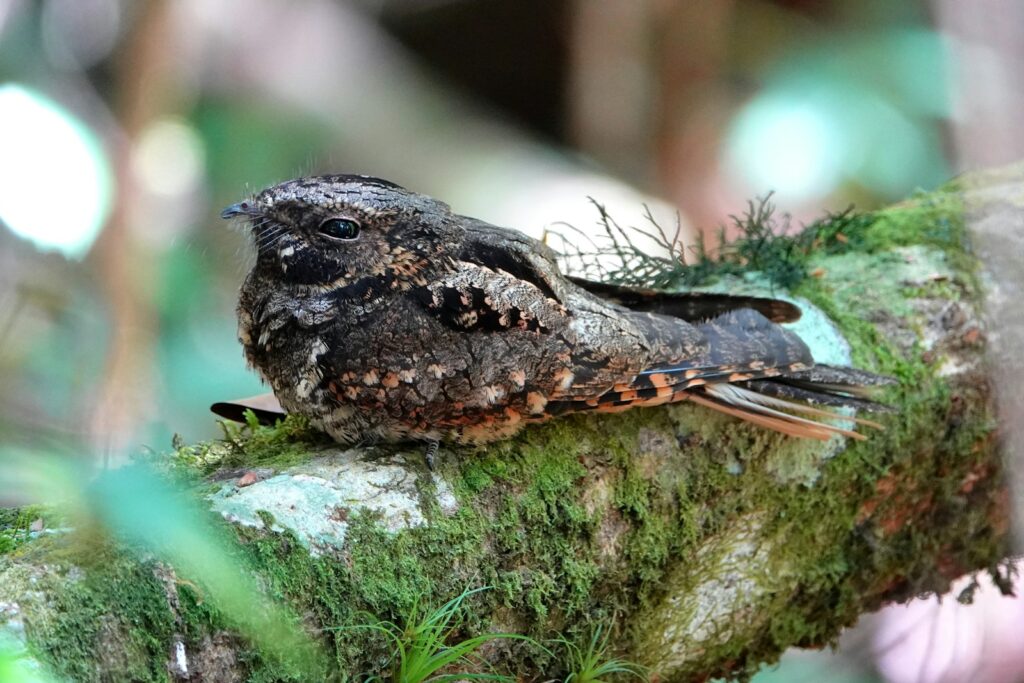
The name “nightjar” carries with it a fascinating and somewhat bizarre historical misconception. In medieval Europe, these birds were called “goatsuckers” (which remains their family name Caprimulgidae, from Latin capri for goat and mulgere to milk) due to the erroneous belief that they sucked milk from goats during the night. This peculiar myth likely arose from farmers observing nightjars flying around livestock at dusk. In reality, the birds were merely hunting insects attracted to the animals, particularly swarms of flies and mosquitoes that gathered around cattle and goats. The misunderstanding persisted for centuries, with some cultures even believing that goats milk dried up or became tainted after nightjar encounters. This superstition serves as a reminder of how mysterious nocturnal wildlife often became entangled with folklore and misunderstanding.
Silent Flight: The Acoustic Advantage
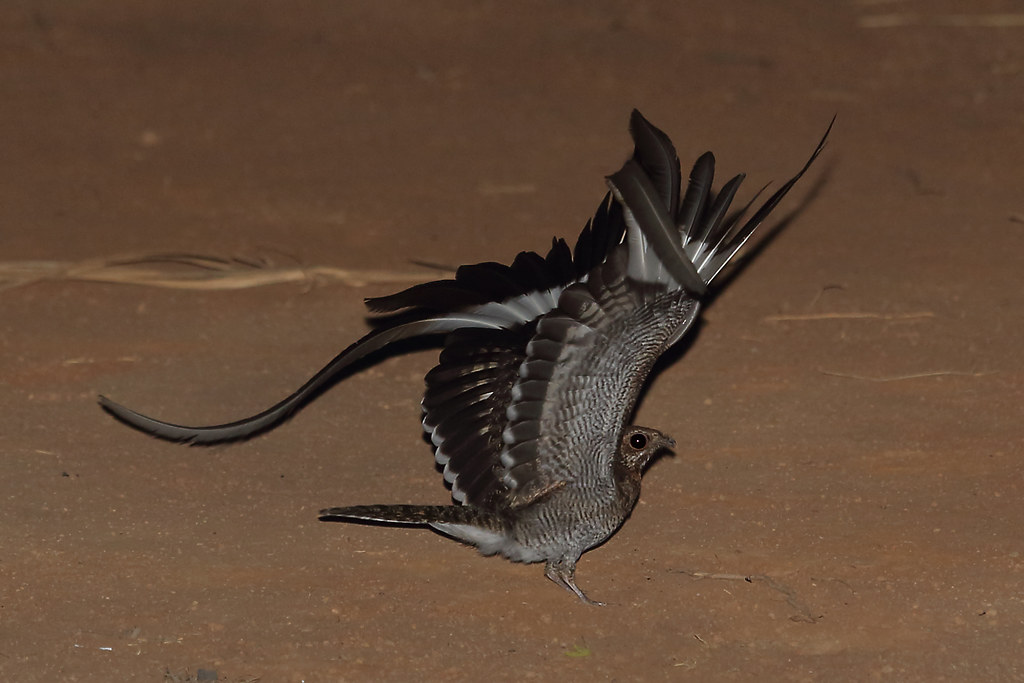
Nightjars possess specialized feather adaptations that allow them to fly in almost complete silence, similar to owls but evolved independently. The leading edges of their primary feathers feature comb-like serrations that break up the turbulence caused by air flowing over their wings, significantly reducing flight noise. This silent approach gives nightjars a critical advantage when hunting insects in the darkness, allowing them to swoop undetected through the night air without alerting prey. Additionally, the velvety texture of their plumage further dampens sound waves, creating an acoustic stealth technology that predates human aviation engineering by millions of years. Researchers studying nightjar flight mechanics have found that these adaptations reduce their flight noise by up to 30 decibels compared to similarly sized birds without these modifications.
Enormous Mouths: Nature’s Insect Nets
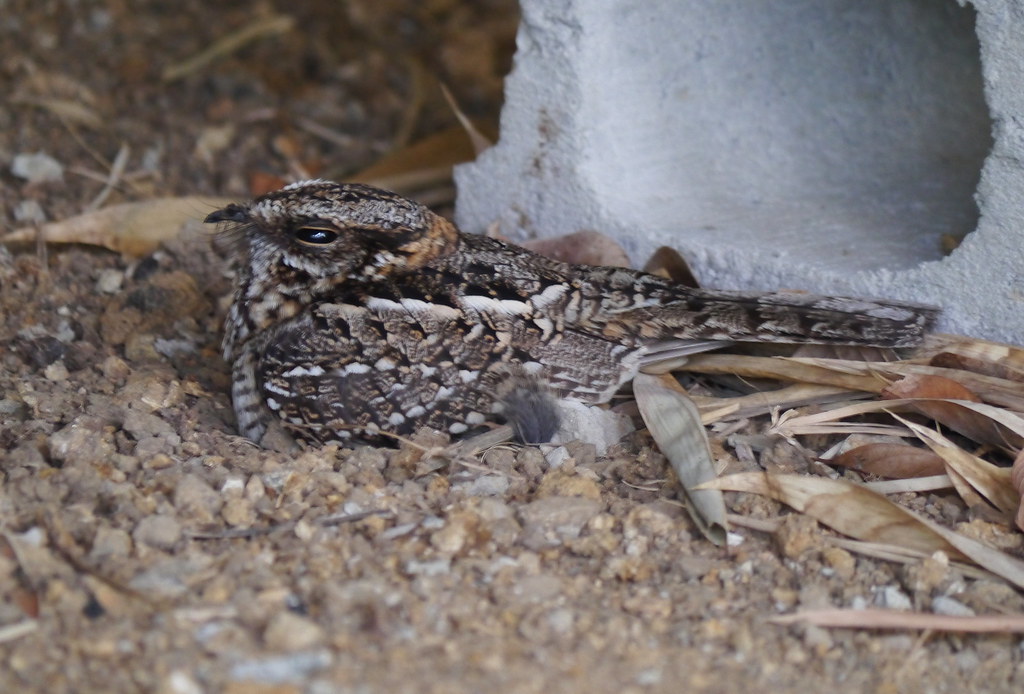
Perhaps one of the most striking features of nightjars is their disproportionately large mouths, which can open to an astonishing width when catching prey. Unlike most birds with rigid bills, nightjars possess a highly flexible rictus (gape) bordered by specialized bristles that effectively increase their catching area when flying through swarms of insects. These rictal bristles function similarly to whiskers, providing sensory feedback and helping to funnel flying insects into their mouths during aerial pursuits. A single nightjar can consume hundreds of mosquitoes, moths, and beetles in a single night, making them valuable allies in natural pest control. Some larger species, like the Common Poorwill of North America, can capture insects nearly half the size of their own heads, a testament to the remarkable efficiency of their feeding adaptations.
Tiny Beaks, Massive Gapes: The Feeding Paradox
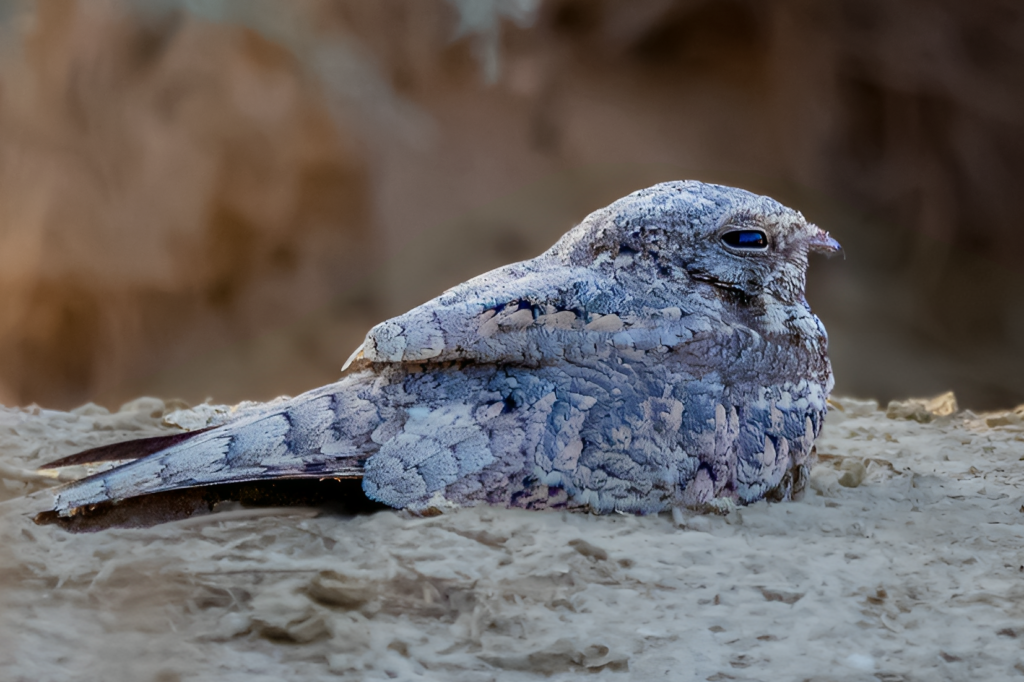
Despite their ability to consume large insects, nightjars possess surprisingly tiny beaks that appear almost insignificant relative to their head size. This seemingly contradictory anatomy serves a specific purpose in their feeding strategy as aerial insectivores. The small, weak bill is merely the anchor point for their enormous gape, which extends well beyond the visible beak and opens like a butterfly net when hunting. When viewed head-on with mouth closed, a nightjar appears to have barely any beak at all, but when feeding, their mouth opens to reveal a cavernous pink maw that can extend almost from ear to ear. This adaptation allows them to maximize their prey-catching surface area while maintaining the lightweight head structure necessary for agile flight and precise aerial maneuvers while hunting.
Torpor: The Energy-Saving Superpower
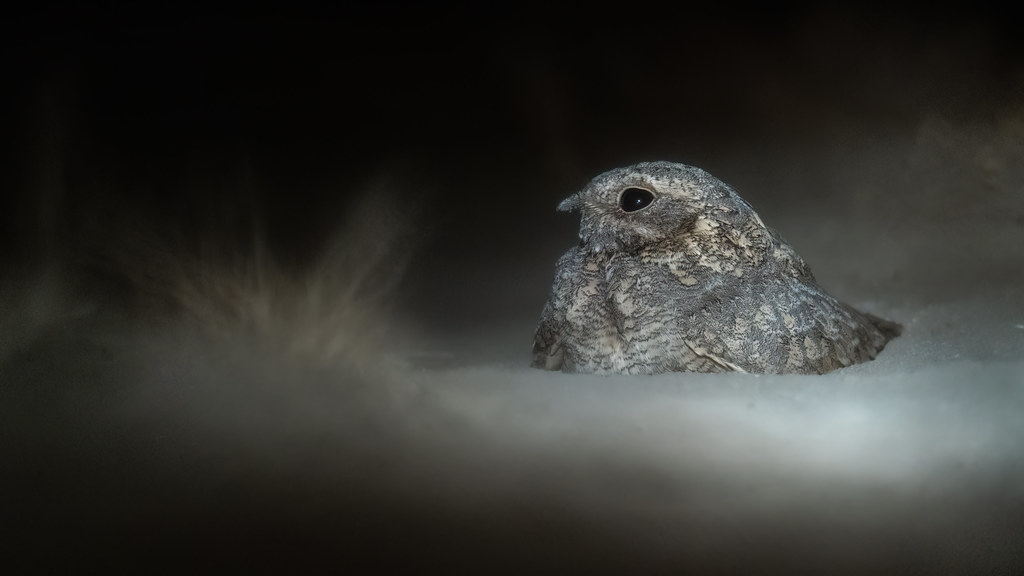
Several nightjar species possess the remarkable ability to enter a state of torpor during periods of food scarcity or harsh weather conditions. This physiological adaptation allows them to dramatically lower their body temperature and metabolic rate, sometimes for days at a time, conserving energy when insects are unavailable. The Common Poorwill takes this adaptation to the extreme—it is the only bird known to enter a hibernation-like state that can last for weeks or even months during winter, with body temperature dropping from 40°C (104°F) to as low as 18°C (64°F). During torpor, a nightjar’s heart rate may decrease from over 100 beats per minute to fewer than 10, and breathing can slow to just a few breaths per minute. This extraordinary ability likely evolved as a survival mechanism that allows these insect specialists to endure periods when their flying prey becomes scarce.
Eyes That Glow: Reflective Vision Adaptations
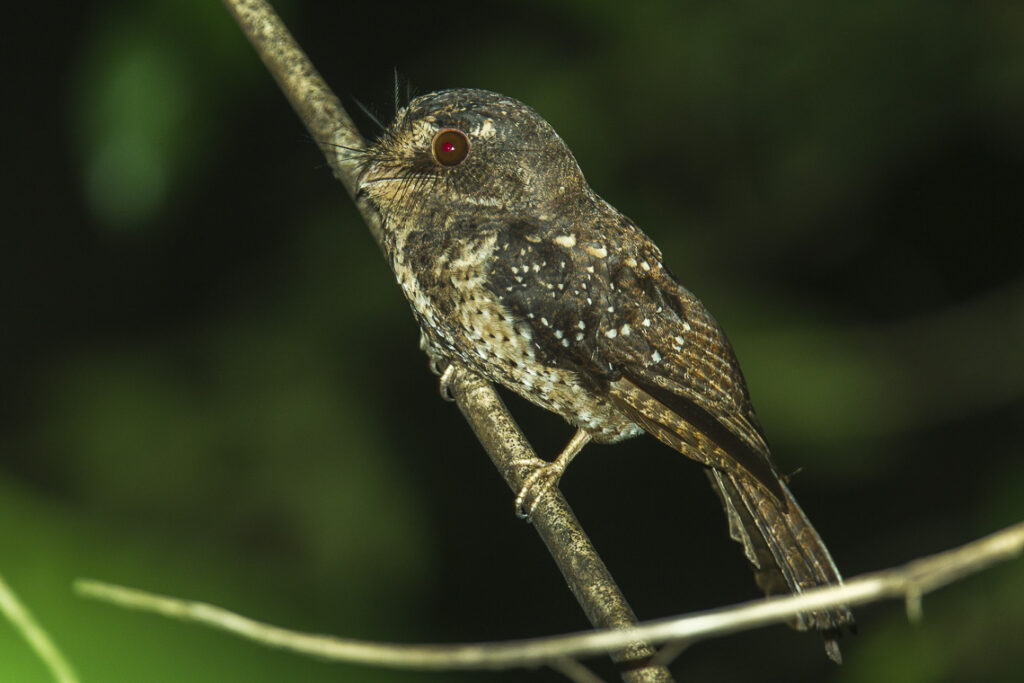
Nightjars possess specialized eyes with a reflective layer called the tapetum lucidum behind their retinas, similar to those found in cats and other nocturnal predators. This adaptation causes their eyes to appear to glow red or orange when caught in a flashlight beam at night, a phenomenon familiar to researchers who study these birds. The reflective layer effectively gives nightjar photoreceptors a second chance to capture photons that passed through the retina initially, dramatically enhancing their light sensitivity in low-light conditions. This visual adaptation allows nightjars to detect the silhouettes of flying insects against the night sky with remarkable precision. Combined with their exceptional night vision, some species can hunt effectively even on moonless nights when light levels are reduced to a tiny fraction of daytime illumination.
Ground Nesters: High-Risk Reproduction Strategy
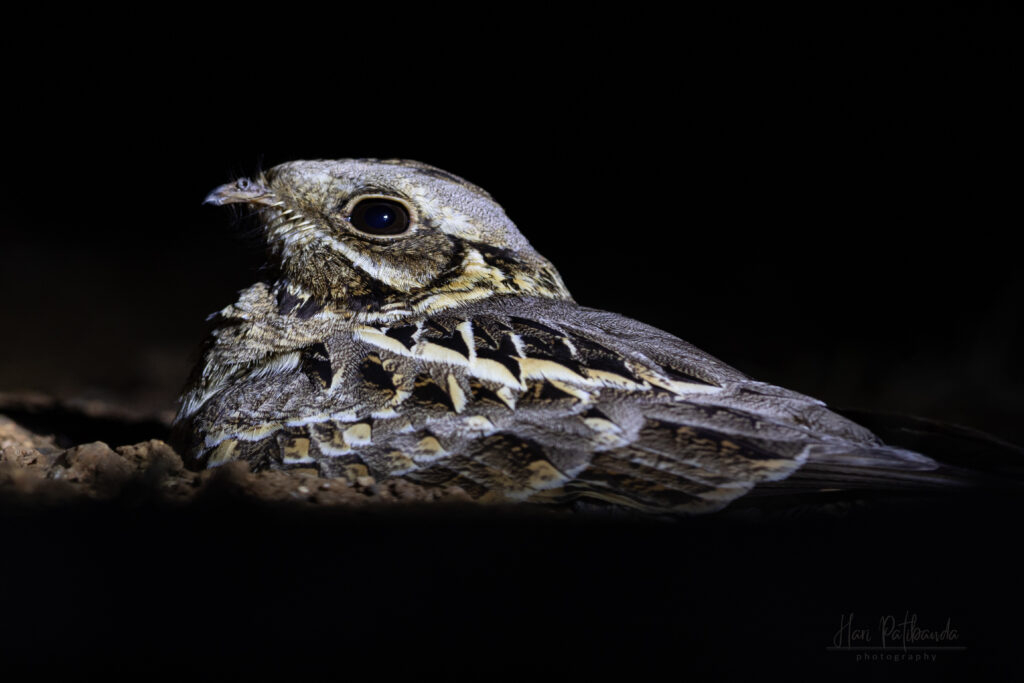
Unlike many birds that build elaborate nests in trees or shrubs, nightjars typically lay their eggs directly on the ground with minimal or no nest construction. This seemingly risky reproductive strategy relies entirely on their exceptional camouflage for protection. Female nightjars typically lay just two eggs, which they place on leaf litter, bare soil, or even rock surfaces that match their own plumage patterns. When incubating, the adult bird sits motionless, blending so perfectly with the surroundings that predators can walk within inches without detecting them. If disturbed during nesting, some species perform elaborate “broken-wing displays,” feigning injury to draw potential predators away from their vulnerable eggs or chicks. This high-stakes approach to reproduction has been successful for millions of years but makes nightjars particularly vulnerable to habitat disturbance and introduced predators.
Mysterious Migration: Intercontinental Journeys
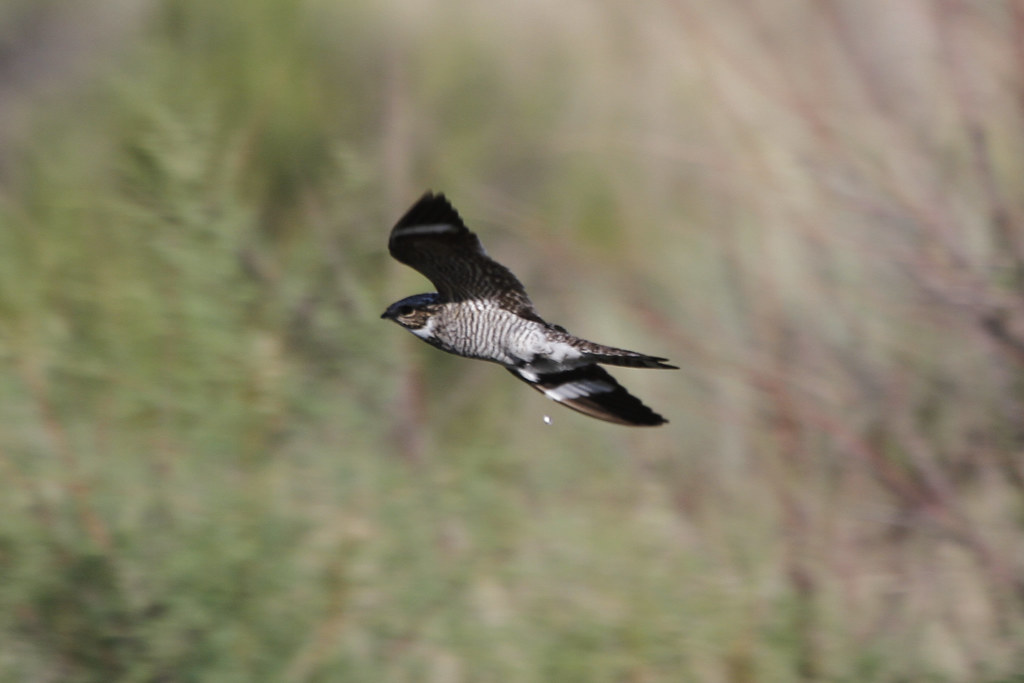
Many nightjar species undertake remarkable long-distance migrations that have only recently been documented through modern tracking technology. The European Nightjar, weighing just 85 grams, travels over 10,000 kilometers annually between Europe and southern Africa, navigating across the Sahara Desert twice each year. Even more impressive is the Common Nighthawk, which can migrate from Alaska to Argentina, one of the longest migratory routes of any bird in the Western Hemisphere. Research using geolocators has revealed that some individual nightjars demonstrate extraordinary navigational precision, returning to exactly the same nesting and wintering territories year after year despite traveling thousands of kilometers between them. These migratory feats are all the more remarkable considering nightjars navigate these journeys independently, with even juvenile birds finding their way to wintering grounds they have never visited before.
Vocal Ventriloquists: Sound Adaptations
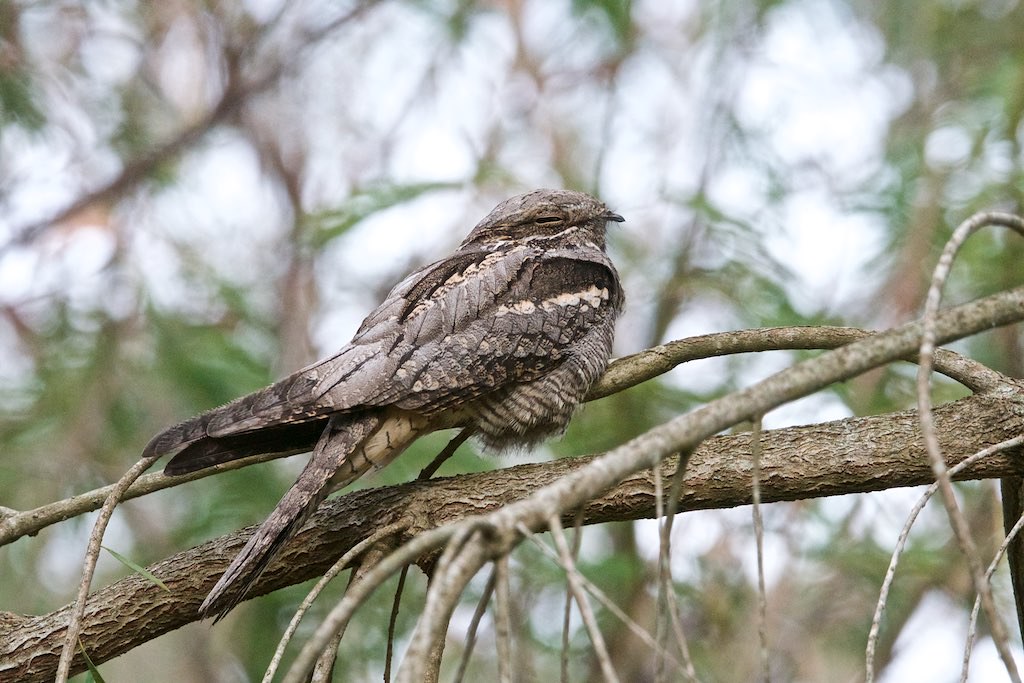
Nightjars produce some of the most distinctive and haunting calls in the bird world, with many species capable of ventriloquial effects that make their vocalizations difficult to locate. The Whip-poor-will of North America is famous for its endlessly repeated namesake call that can continue uninterrupted for hours, sometimes exceeding 1,000 consecutive phrases. The ventriloquial quality of nightjar calls serves as an anti-predator adaptation, making it challenging for potential threats to pinpoint their location while they vocalize. Some tropical species, like the Oilbird (a nightjar relative), use echolocation clicks in complete darkness, representing one of the few instances of echolocation evolving in birds. Many nightjar vocalizations carry effectively over long distances, allowing males to proclaim territories and attract mates without revealing their exact position to predators.
Moon-Dependent Love Lives: Cosmic Breeding Cycles
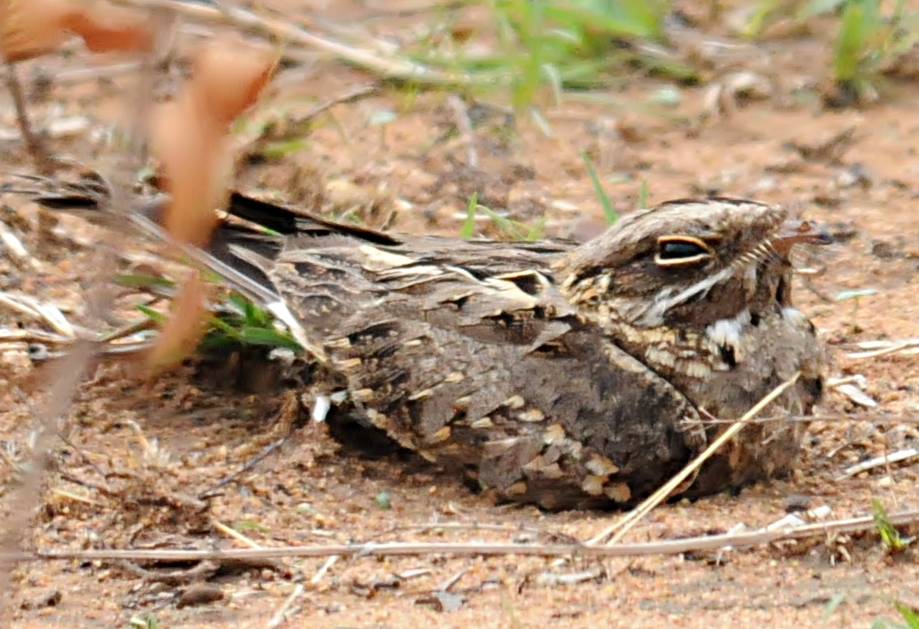
Research has revealed the surprising fact that many nightjar species synchronize their breeding activity with specific lunar phases, a phenomenon rarely documented in birds. Studies show peak nightjar courtship and egg-laying often coincide with the full moon, when increased illumination improves their hunting success and provides more feeding opportunities to sustain breeding efforts. This lunar synchronization means that successful pairs can raise their young during periods when night visibility is optimal for foraging. Some species, like the Puerto Rican Nightjar, show significantly increased calling and courtship display activity during the waxing moon phase, with acoustic activity sometimes doubling compared to moonless nights. This celestial dependency creates a fascinating connection between these terrestrial birds and our nearest cosmic neighbor, demonstrating yet another way that nightjars have adapted their lifecycle to their nocturnal niche.
Threatened Existence: Conservation Challenges
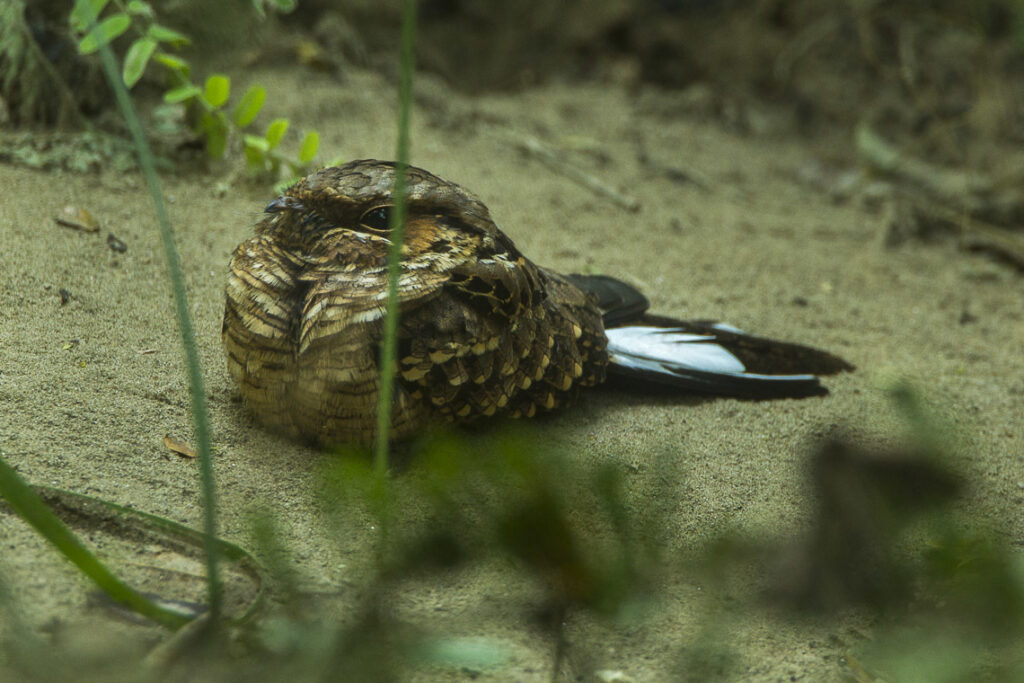
Despite their wide distribution, many nightjar populations face significant threats that have led to concerning declines over recent decades. The European Nightjar has disappeared from large portions of its former range, while the Whip-poor-will has declined by over 60% across North America since the 1970s. These declines are linked to multiple factors, including habitat loss, agricultural intensification, pesticide use reducing insect prey, and increasing light pollution that disrupts their nocturnal hunting patterns. Climate change poses additional challenges, potentially creating mismatches between nightjar breeding cycles and peak insect abundance. Road mortality also significantly impacts nightjar populations, as these birds often rest on warm asphalt surfaces at night, where their camouflage offers no protection from vehicles. Conservation efforts focused on protecting key breeding habitats and reducing artificial night lighting in critical areas offer hope for reversing these concerning trends.
The nightjar family represents one of nature’s most perfectly adapted nocturnal specialists, with physical and behavioral adaptations refined over millions of years of evolution. From their silent flight and remarkable camouflage to their unique physiological abilities like torpor, these birds have developed extraordinary solutions to the challenges of night-living. Despite their widespread distribution and the critical ecological services they provide through insect control, nightjars remain largely unknown to most people—silent shadows passing overhead in the darkness. As we continue to expand our understanding of these mysterious birds through modern research techniques, we discover ever more fascinating aspects of their biology that highlight the importance of preserving their habitats. By protecting nightjars and the dark skies they depend on, we not only safeguard these remarkable birds but also maintain the delicate balance of our nocturnal ecosystems.
